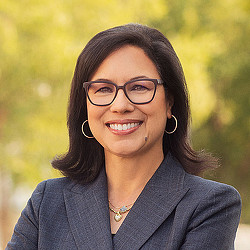Climate Disclosure Mandates Will Irreversibly Transform Real Estate — and Supercharge the Low-Carbon Market
June 13, 2022 | By Diane Hoskins
Editor's Note: This article was originally published on Fortune.
In recent decades, the struggle to decarbonize cities has primarily focused on building codes, local laws, and taxes to incentivize the real estate industry to create green building stock. But these efforts have not yielded the rate and scale of change needed to keep global temperature rise to 1.5 degrees Celsius.
It has become clear that investors, driven by tenant demand and regulations, will be the force pushing the decarbonization of commercial real estate.
In March, news of the U.S. Securities and Exchange Commission’s (SEC) proposed regulation of climate-related risk disclosure received a lot of attention and speculation about its implications for public companies. Should the proposed rule take effect, companies seeking capital from U.S. investors would be required to disclose climate-related metrics impacting business operations and financial standing.
The SEC's proposal was far from being the first of its kind; instead, it emulated what had taken place in other countries. With Europe seeking to become the world's first climate-neutral continent, the EU's Sustainable Finance Disclosure Regulation (SFDR) and the Corporate Sustainability Reporting Directive (CSRD) came into force in 2021 as a response to pressure from investors to regulate corporate reporting for ESG progress. Additionally, we are seeing more regulator mandates for ESG disclosure across Asia. In December, a plan was announced by the Securities and Futures Commission (SFC), and the Hong Kong Monetary Authority (HKMA) to require companies to share ESG standards to inform investors about the environmental friendliness of companies.
There are implications for the larger business community and real estate, one of the most significant contributors to greenhouse gas emissions. Contrary to what can be viewed as a hodgepodge of well-intentioned green policies, financial disclosure regulations span industries and geographies. With growing competitiveness for capital investors and foreign exchanges, this kind of regulation could harmonize the transparency rules for companies by creating reporting and disclosure standards.
The movement of countries adopting financial disclosure mandates could be the green market accelerant that sustainability advocates have always dreamed of. There is a mixture of studies looking at the impact of financial regulation disclosure since the 1933 and 1934 securities acts that led to the eventual formation of the SEC. Some have found external financing growth in countries with more demanding disclosure requirements. The mandatory disclosure of more firm-specific information has also improved capital allocation across various industries.
The real estate sector must quickly adopt new practices to create the impact at scale to fast-track decarbonization efforts by 2030.
The impact that real estate development and cities have on climate change mitigation efforts has long been overlooked. When I attended the most recent United Nations climate change conference, the annual global gathering to assess and lay out climate action strategies, it was only the second time there had been a full day dedicated to the theme of buildings and cities.
It is now well-established that the buildings and construction sectors generate 40% of global greenhouse gas emissions. The Global Alliance for Buildings and Construction (GlobalABC), launched by the United Nations Environment Programme (UNEP), puts this estimate even higher when accounting for embodied carbon in the production of materials, building, operations, and other construction-related activities, making it the world’s largest contributor to greenhouse gases.
While the SEC’s landmark climate-related disclosure proposal would require public companies to disclose what a growing number of companies already share voluntarily in annual sustainability and ESG transparency reports, it could truly move the needle since it directly impacts real estate. The proposed call to report Scope 1, Scope 2, and Scope 3 emissions for real estate investment trusts (REITs) and other traded real estate almost immediately could lead to a national framework for the entire industry. These companies would now have to disclose the share of assets and properties exposed to certain material climate risks, such as wildfire and floods, as well as costs to improve the emissions efficiency of existing buildings.

To reach our climate objectives, if the entire real estate ecosystem used low-carbon products at scale, we would see the ultimate decrease in costs over time. We have seen this previously with other sustainable construction products, such as photovoltaic panels.
There is a growing demand for the users of building space to be transparent with their energy consumption and progress to reduce greenhouse gas emissions. On one hand, this is driving tenants to more energy-efficient buildings. This could also lead to enough green building retrofits that alter economics to help drive a global shift toward new materials and techniques.
Many of the low-carbon methods and materials needed to cut buildings’ carbon footprint are already available to architects, contractors, and developers. Lower-carbon alternative materials for steel, insulation, finish materials, concrete, and cement are emerging and need investment to become available at a larger scale. The real estate industry can be the catalyst for this low-carbon marketplace.
With mounting pressure to take action, real estate developers and investors can no longer state their good intentions around ESG and announce a sustainability goal for 30 years into the future. New regulations will require companies to take action toward these goals.
Now is the time for all players in our industry to collectively embrace an innovative mindset. As business decision-makers, let’s act quickly and create a climate of change.
For media inquiries, email .

